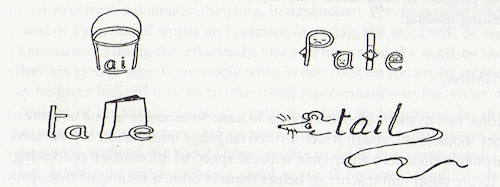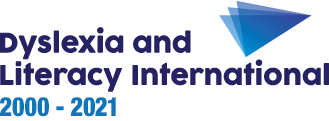Sentence dictation



When the children have acquired enough expertise in writing single words, they can use them in phrases.
Before you give a dictation, make sure the children with dyslexia have read the dictation passage in advance.
If possible, you should record them reading the passage. Later on you can ask them to write down the words as they listen to their own voice. This is a powerful tool for training memory.
There are also several multisensory routines for sentence dictation. Hornsby proposes the following sequence, which induces pupils to listen (auditory modality), to speak (oral-kinaesthetic modality), to write (manual-kinaesthetic modality), to look (visual modality) and to read.
Multisensory routine for dictation of phrases
- – the teacher says the phrase at a normal pace
- – the pupils repeat the phrase aloud
- – the teacher repeats the phrase with a short pause between each word, speaking very clearly
- – the pupils write the phrase as they say it out loud
- – the pupils read out loud exactly what they have actually written
- – if they have made mistakes, the teacher asks them to find them and to correct them
The multisensory routines described above are all the more important for children with dyslexia because they bring into play phonological analysis and help memory. If you cannot use them in class, see if ‘home’ or the ‘specialists’ can help.
In addition, the final step in all of these routines is that of self-correction. Whatever routine you use, it is essential that for children with dyslexia you leave time to read over what they have written, ideally out loud. This will allow many children to find their own mistakes.
ACTIVITY 21
Find five regular words, five irregular words and five short phrases. Then, with your course partner practice the multisensory routines described above. Then reverse the roles.
Now continue please.
Memory tricks (mnemonics)
Mnemonics can help some children considerably, but may confuse others. Pupils will retain the mnemonics better if they have invented them themselves.
Some mnemonics will help children to remember the spelling of common irregular words. For example:
‘because’
Big Elephants Can Always Use Small Entrances
‘said’
Sally-Ann Is Dancing
‘necessary’
It is necessary to have a shirt with one Collar and two Sleeves
You can also group families of irregular words into sentences:
A good knight knows how not to knit knots at night.
And here is a little story you can print out and give to the pupils:
Fill in the kn and read out loud
The _ _ight fell of his horse and
his _ _ife went into his _ _ee.
`Oh _ _ickers!` he said.
He might have _ _ocked himself out.
Now he cannot _ _eel nor can he get onto his horse.
He will have to stay at home and _ _it.
Many children with dyslexia have particular problems with homophones, that is words which have the same pronunciation but different spellings and meanings.
For children with a better auditory memory, you may use little stories to help memorize the accurate spelling for each word :
< tail / tale > (the ‘tail’ of an animal is the one ending with a pricked up tail at the end, represented by the ‘l’; the ‘tale’ ends in an ‘e’, as in ‘end’, because even the best tales come to an end)
For children with a stronger visual memory you may introduce the homophones with little drawings which will help retain the accurate spellings:



